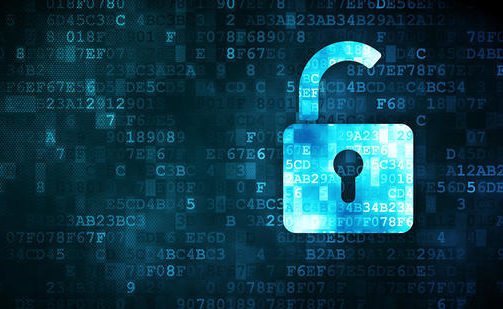How Can You Safeguard Your Privacy in a Digital Age?

In the modern world, where almost every aspect of our lives is conducted online, privacy has become a major concern. From social media platforms and online shopping to digital banking and remote work, our personal information is constantly being shared, stored, and analyzed by various entities. While these technologies have made our lives more convenient, they have also introduced new risks to our privacy.
Ensuring your privacy in a digital age requires vigilance, knowledge, and the adoption of specific practices designed to protect personal data. Whether you’re an individual looking to safeguard your personal information or a business aiming to keep client data secure, there are numerous ways you can protect yourself from digital threats. In this article, we will explore the importance of safeguarding privacy, the risks involved, and the practical steps you can take to protect yourself in today’s increasingly connected world.
The Growing Importance of Digital Privacy
The digital age has introduced many conveniences, but it has also resulted in a significant loss of privacy. From the widespread use of smartphones and smart home devices to the rise of online platforms and social media, our lives are now more public than ever. While the benefits of technology are undeniable, so are the risks. Personal information can be misused in numerous ways, from identity theft to online harassment.
The digital footprint we leave behind is vast and often difficult to control. Every online search, social media post, and online purchase adds data to an ever-growing database of our personal habits, preferences, and behaviors. This makes us vulnerable to exploitation, especially if that data falls into the wrong hands. Because of this, safeguarding your privacy has never been more critical.
The Risks to Privacy in the Digital Age
Understanding the risks is the first step in protecting your privacy. The digital age presents several threats to personal privacy, including:
1. Data Breaches
Data breaches are one of the most significant risks to privacy. Hackers and cybercriminals frequently target large corporations and organizations to access personal information, such as credit card numbers, social security numbers, and login credentials. These breaches can lead to identity theft, financial loss, and a compromised sense of security.
2. Tracking and Surveillance
Online platforms, websites, and apps track your every move, from the websites you visit to the products you buy. This information is often collected without your explicit knowledge and is used to build detailed profiles of you for marketing purposes. While some tracking is necessary for the functionality of websites and apps, extensive tracking can infringe upon your privacy.
3. Phishing Scams
Phishing scams are attempts by cybercriminals to trick you into providing sensitive information, such as passwords or credit card details. These scams often come in the form of fake emails, messages, or websites that appear legitimate but are designed to steal your personal information.
4. Public Wi-Fi Networks
Public Wi-Fi networks, such as those found in cafes, airports, and hotels, are often unsecured, making them easy targets for cybercriminals to intercept your data. Using these networks can expose your sensitive information, such as login credentials and financial details, to hackers.
5. Social Media Overexposure
Social media platforms can be an excellent way to connect with friends and family, but they also open the door to privacy risks. Oversharing personal details or making your profiles public can make you vulnerable to identity theft, cyberstalking, and other privacy invasions.
Steps to Safeguard Your Privacy
Fortunately, there are various steps you can take to protect your privacy in the digital age. These measures involve both technological tools and personal practices to limit your exposure and reduce the risks to your personal data.
1. Use Strong Passwords and Multi-Factor Authentication (MFA)
One of the easiest and most effective ways to protect your online accounts is to use strong, unique passwords for each one. Avoid using easily guessable passwords like “123456” or “password,” and instead, create long, complex combinations of letters, numbers, and special characters.
To further enhance security, enable multi-factor authentication (MFA) wherever possible. MFA requires a second form of verification (such as a text message or authentication app) in addition to your password, making it much harder for unauthorized users to access your accounts.
2. Limit the Information You Share Online
Think carefully about the personal information you share on social media, websites, and other online platforms. Even seemingly harmless details, such as your location, birthday, or hobbies, can be used by cybercriminals to steal your identity or gain access to your accounts. Review your privacy settings on social media to limit who can see your posts and personal information.
3. Encrypt Your Communications
Encryption is a powerful tool for safeguarding your privacy. By encrypting your communications, such as emails and messages, you ensure that only the intended recipient can read them. Many messaging apps (e.g., Signal, WhatsApp) offer end-to-end encryption by default, which makes it more difficult for third parties to intercept or access your private conversations.
4. Avoid Public Wi-Fi for Sensitive Activities
While public Wi-Fi networks are convenient, they pose a significant privacy risk. Hackers can use these unsecured networks to intercept your data. Avoid conducting sensitive activities (e.g., banking, shopping, logging into accounts) while on public Wi-Fi. If necessary, use a virtual private network (VPN) to encrypt your internet connection and protect your data from potential cyberattacks.
5. Use Secure Websites and Apps
When shopping or conducting other financial transactions online, always ensure that the website uses HTTPS (the “s” stands for secure). This ensures that your data is encrypted while it’s being transmitted, making it harder for hackers to intercept. Similarly, only download apps from reputable sources, such as the Apple App Store or Google Play, to minimize the risk of malware.
6. Regularly Update Your Software
Keeping your software up to date is essential for safeguarding your privacy. Software updates often include security patches that address vulnerabilities that hackers may exploit. Enable automatic updates whenever possible, and regularly check for updates on your devices and apps.
7. Be Wary of Phishing and Scams
Phishing scams are one of the most common ways hackers gain access to personal information. Be cautious when receiving unsolicited emails or messages asking for sensitive information, especially if they appear suspicious or come from unknown senders. Verify the authenticity of requests by contacting the organization directly, and never click on links or download attachments from untrusted sources.
FAQs on Safeguarding Privacy in a Digital Age
- What is the best way to protect my privacy online?
- Use strong, unique passwords, enable multi-factor authentication, and avoid sharing too much personal information on social media and websites.
- Is using a VPN necessary to protect my privacy?
- While not strictly necessary for all activities, a VPN is an excellent tool for securing your internet connection, especially on public Wi-Fi networks.
- How can I prevent websites from tracking my data?
- Use privacy-focused browsers, enable ad blockers, and regularly clear your browsing history and cookies. Some browsers, like Mozilla Firefox, also offer enhanced tracking protection features.
- What should I do if my personal information is compromised in a data breach?
- Immediately change your passwords, monitor your accounts for unusual activity, and consider placing a fraud alert or credit freeze on your credit report to prevent identity theft.
- How do I know if an email is a phishing attempt?
- Look for suspicious elements such as unfamiliar senders, generic greetings (e.g., “Dear customer”), or requests for sensitive information. Be cautious of any link or attachment, and verify the sender’s identity before responding.
- Can social media settings really protect my privacy?
- Yes, most social media platforms offer privacy settings that allow you to control who can see your posts and personal information. Take time to review these settings and limit your exposure.
- Is it safe to use my credit card for online purchases?
- Yes, as long as the website is secure (look for “HTTPS” in the URL) and the company is reputable. You can also use payment services like PayPal or digital wallets for added security.
Conclusion
In the digital age, safeguarding your privacy is more important than ever. With the vast amount of personal data shared online every day, it’s essential to adopt strategies to protect yourself from cyber threats. By using strong passwords, enabling multi-factor authentication, encrypting your communications, being cautious on public Wi-Fi, and regularly updating your software, you can significantly reduce your risk of falling victim to cybercrimes.
Furthermore, being mindful of the information you share online and taking proactive steps to prevent tracking and phishing attacks will help keep your personal data secure. In the end, digital privacy is a shared responsibility. The more you educate yourself and take action to protect your data, the safer you will be in today’s interconnected world.
Key Takeaways:
- Password security and multi-factor authentication are crucial for protecting online accounts.
- Encrypting communications and being cautious of phishing scams helps safeguard sensitive information.
- Public Wi-Fi should be avoided for sensitive activities; always use a VPN when necessary.
- Regularly updating software and reviewing privacy settings on social media platforms is vital.
- Stay informed and take proactive steps to ensure your digital privacy is protected against potential threats.




Leave a Comment